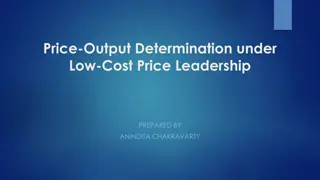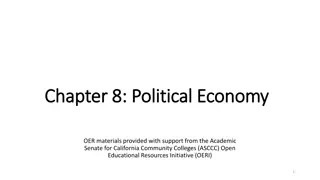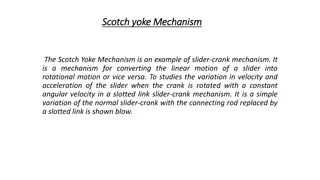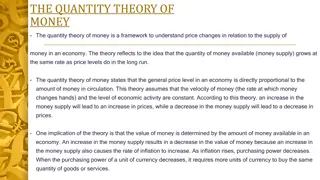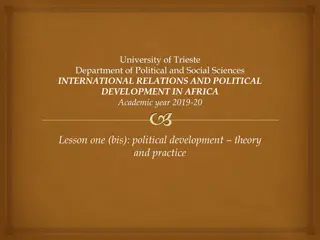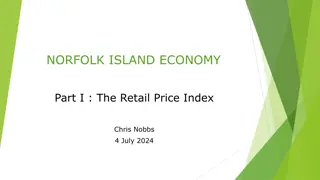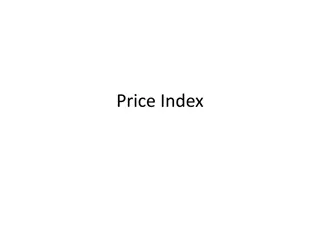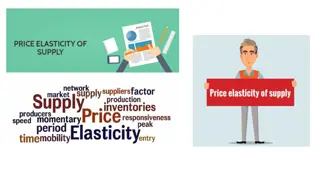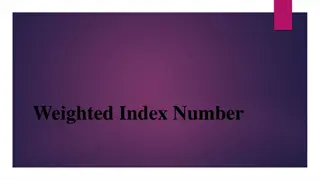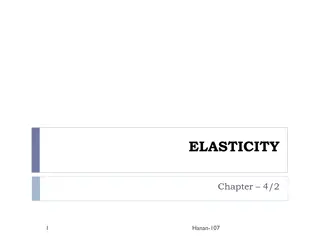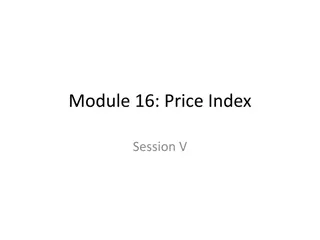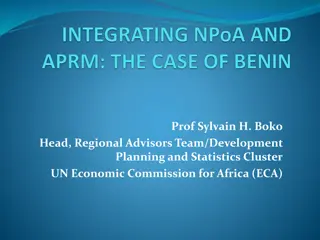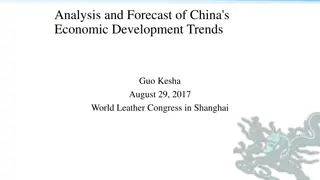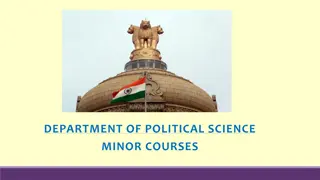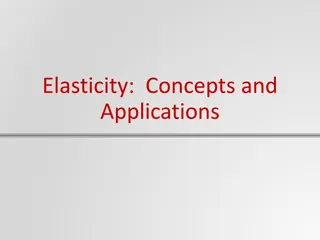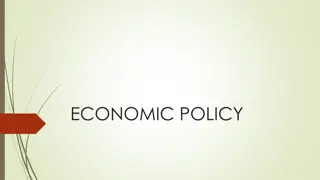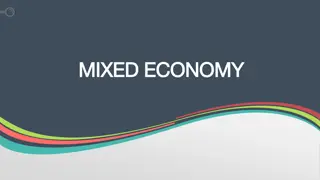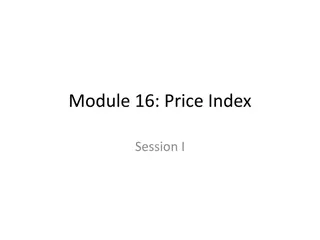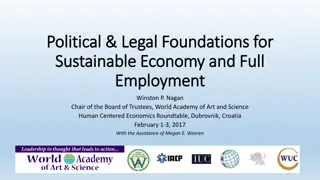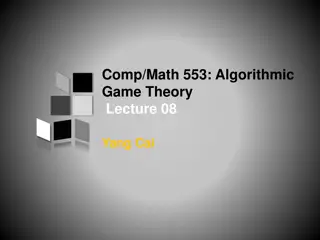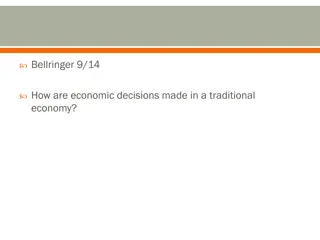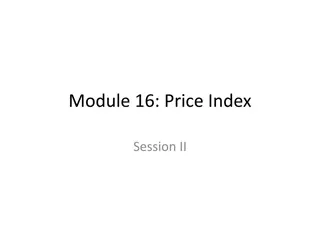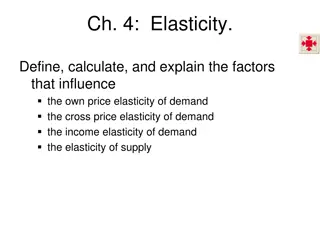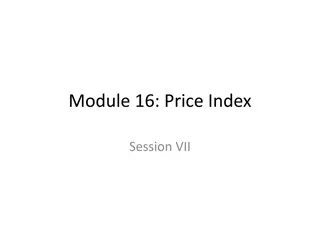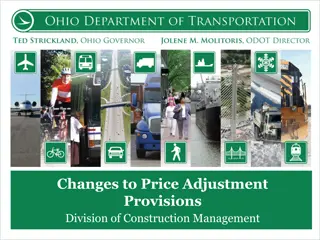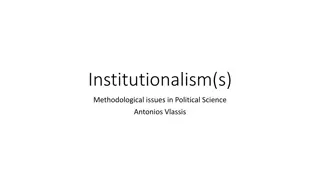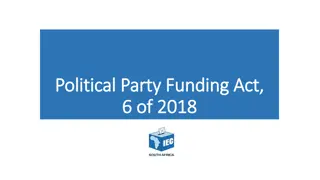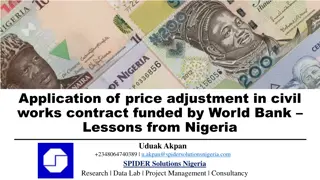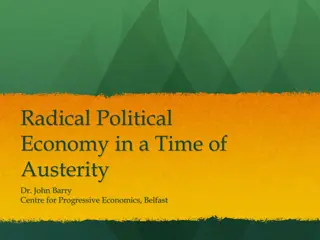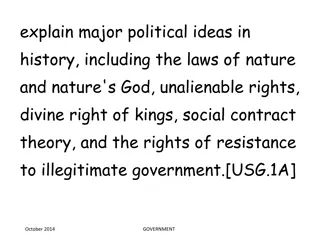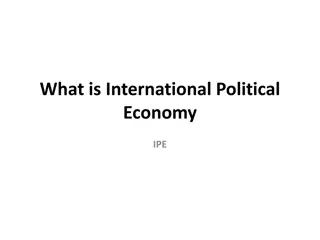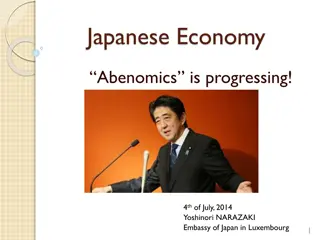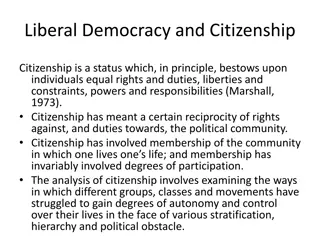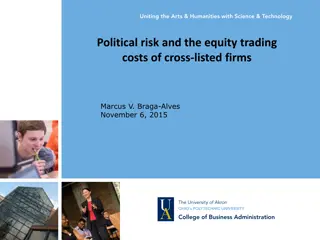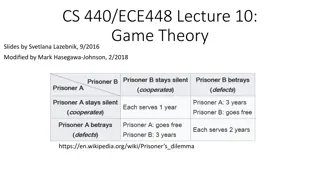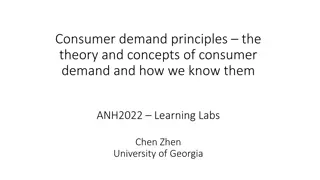Understanding Our Political Economy Through Economic Theory and Price Mechanism
Explore the intricate dynamics of political economy through neoclassical economic theory, price mechanism analysis, and the role of land as a factor of production. Delve into concepts like labor demand, capital goods, credit markets, and the limitations of the price mechanism in certain contexts. Insights from scholars like Frank H. Knight shed light on the complexity of defining land as capital in economic discourse.
Download Presentation

Please find below an Image/Link to download the presentation.
The content on the website is provided AS IS for your information and personal use only. It may not be sold, licensed, or shared on other websites without obtaining consent from the author. Download presentation by click this link. If you encounter any issues during the download, it is possible that the publisher has removed the file from their server.
E N D
Presentation Transcript
LECTURE 11 Neoclassical Economic Theory and Holes in the Price Mechanism
Neo- Classic al Theory
LABOR Demand curve P R I C E Supply curve e QUANTITY
CAPITAL GOODS Demand curve Supply curve P R I C E e QUANTITY
CREDIT MARKETS Demand curve Supply curve P R I C E e QUANTITY
THE PRICE MECHANISM DOES NOT OPERATE WHERE LAND (I.E., NATURE) IS THE FACTOR OF PRODUCTION
Land is capital merely; defined in any realistic way, it presents an infinite variety of conditions as to maintenance and replacement requirements, and possibilities of increase in supply, as does any other general class of capital instruments. Frank H. Knight, On the History and Method of Economics, 1956, p.54.
NOT ALL LAND IS AVAILABLE FOR USE IN THE PRODUCTION OF GOODS (I.E., OF WEALTH) S3 S2 S1 S4 S5 S1 = Total supply of land in a region without regard to topographic, other natural characteristics and societal organization P R I C E S5 S1 S4 S3 S2 QUANTITY
ANOTHER 10-15% OF THE TOTAL SUPPLY OF LAND IS NOT AVAILABLE FOR ADDITIONAL REASONS S4 S3 S2 S1 S5 S2 = Total supply, less land that cannot be productively utilized for reasons of topography, being subject to frequent flooding, potential for earthquakes, etc. etc. P R I C E S5 S1 S4 S3 S2 .. .. QUANTITY
COMMUNITIES THEN MAKE CONSCIOUS DECISIONS TO SET ASIDE ADDITIONAL LAND S3 S2 S1 S4 S5 S3 = S2, less land allocated for parks, recreation, animal preserves, wetlands, etc. P R I C E S5 S1 S4 S3 S2 QUANTITY
PUBLIC GOODS AND SERVICES COMMAND ADDITIONAL LAND WITHIN A COMMUNITY S3 S2 S1 S4 S5 S4 = S3, less land allocated for governmental buildings and other public purposes, airports, highways, railway lines, etc. P R I C E S5 S1 S4 S3 S2 .. QUANTITY
THE NET RESULT IS THAT, ON AVERAGE, PERHAPS ONE-HALF OF THE TOTAL LAND AREA IS AVAILABLE FOR PRIVATE INVESTMENT AND DEVELOPMENT S3 S2 S1 S4 S5 S4 = land area actually available for development P R I C E WHY DOES THIS SUPPLY CURVE S5 LEAN TO THE LEFT AS PRICES ARE RISING? S1 S5 S4 S3 S2 QUANTITY
All markets are speculative and, in fact, approach the character of an ideal market more or less in proportion to the degree that they are explicitly and effectively speculative, i.e., to the degree in which there is organized speculation. .



